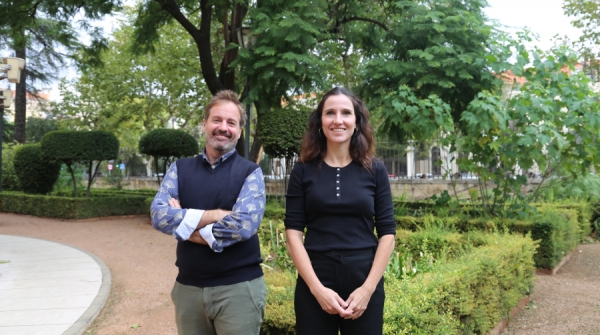Forest damage caused by insects and diseases is increasing in many parts of the world due to climate change as reductions in plants' defense mechanisms, induced by global warming, seem to contribute to forests' increased vulnerability to the incidence of pathogens and diseases.
These disturbances jeopardize many of the beneficial effects that forests offer the world, such as carbon sequestration, the regulation of water flows, wood production and the conservation of biodiversity. Having a complete and harmonized map of what these disturbances are and have been in Europe is essential to be able to understand and anticipate future incidents, thus protecting forests and their advantages.
This unified European registry did not exist until now. An international team coordinated by the Joint Research Centre (JRC) of the European Commission, on which Rocío Hernández and José Luis Quero, researchers in the Department of Forest Engineering at the University of Cordoba, have worked, has developed a new spatially detailed database on disturbances caused by pathogens and diseases: the Database of European Forest Insect and Disease Disturbances – DEFID2.
"We worked for months on a committee of experts in which the different systems for the recording of these disturbances in the different countries and regions were presented, and a series of links were established, giving rise to this more simplified, but very robust, common database, one that greatly minimizes subjectivity, and that we tested with data from the different countries," says Rocío Hernández about the process of creating this "common language for all the scenarios of Europe's forests," explained José Luis Quero. All countries can now translate their records into the common language that is the DEFID2 and make them available to the entire community via this open tool.
The database contains more than 650,000 harmonized georeferenced records, mapping insects and diseases occurring between 1963 and 2021 in European forests. The records currently cover eight different countries and were acquired through various methods, such as land surveys and remote sensing techniques.
"The important thing is that this harmonized protocol allows anyone to supply the database. This way we can expand the number of affected areas included in order to increase the power of predictive models and reduce levels of uncertainty," explains Quero.
Records in DEFID2 are described by a set of qualitative attributes, including the severity and patterns of damage, pathogens, host tree species, climate-driven triggers, silvicultural practices, and eventual health interventions. In addition, "there is a very interesting component: this is the first database that connects with remote sensing data," says Hernández. In this way, the spatial pattern of damage and the temporal pattern are united.
The database is complemented by Landsat Normalized Burn Ratio time series satellite data of the affected forest areas, an index very sensitive to abrupt changes in vegetation that allows one, through images, to see the onset, duration and magnitude of the disturbance.
In addition to taking into account spatial and temporal patterns, which facilitates remote sensing with satellite passage data at different times, there is a third important level of information: the interaction between factors. As Quero explains: "damage by pathogens and diseases are biotic damage (internal, of living organisms), but they have an abiotic history (external factors)." That is, the information on biotic damage is cross-checked with environmental events, such as drought, wind and fires. Both factors can be detected by remote sensing and the relationship between the two is analyzed, both past and future, in order to predict whether certain environmental conditions can be a breeding ground for a new disease or the development of a pathogen.
Data from the University of Córdoba
The drying of Quercus pyrenaica, mainly oak and cork oak species; and decay in conifers, such as wild pine, black pine and the Spanish fir, are some of the cases of damage to Spanish forests that have been included thanks to studies by the UCO. This data was gathered by these researchers over more than 10 years and through several research projects that, in a pioneering way, focused on the use of remote sensing to document and analyze tree decay damage.
This common European effort in the generation of the DEFID2 database arises as a novel resource making a unique contribution to the designing of networks of experiments, improving understanding of the ecological processes behind biotic disturbances of forests, monitoring their dynamics, and improving their representation in terrestrial and climate models. Using it and continuing to feed it data will bolster its potential to protect forests and the benefits they provide.
Reference
Forzieri, G., Dutrieux, L. P., Elia, A., Eckhardt, B., Caudullo, G., Taboada, F. Á., Andriolo, A., Bălăcenoiu, F., Bastos, A., Buzatu, A., Dorado, F. C., Dobrovolný, L., Duduman, M.-L., Fernandez-Carrillo, A., Hernández-Clemente, R., Hornero, A., Ionuț, S., Lombardero, M. J., Junttila, S. … Beck, P.S.A. (2023). The Database of European Forest Insect and Disease Disturbances: DEFID2. Global Change Biology, 29, 6040–6065. https://doi.org/10.1111/gcb.16912


